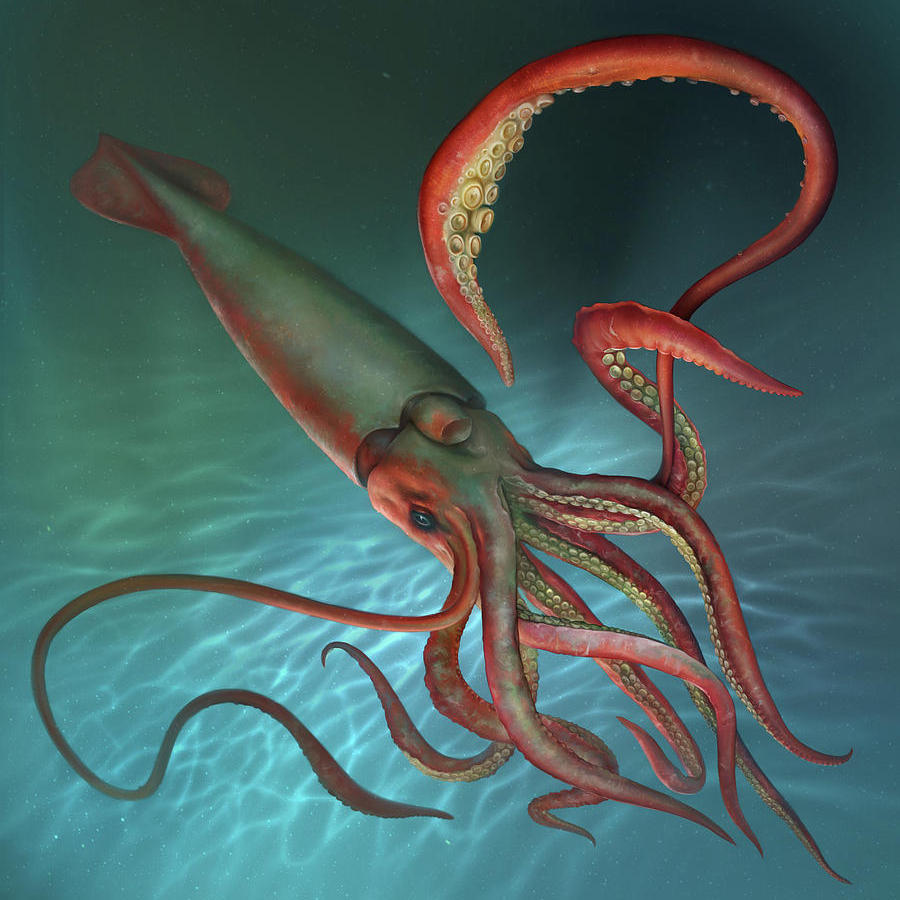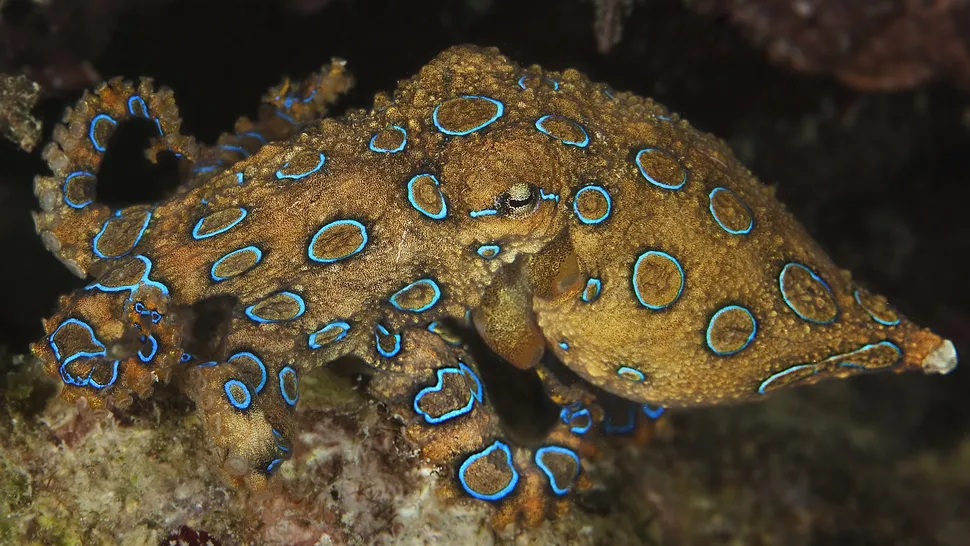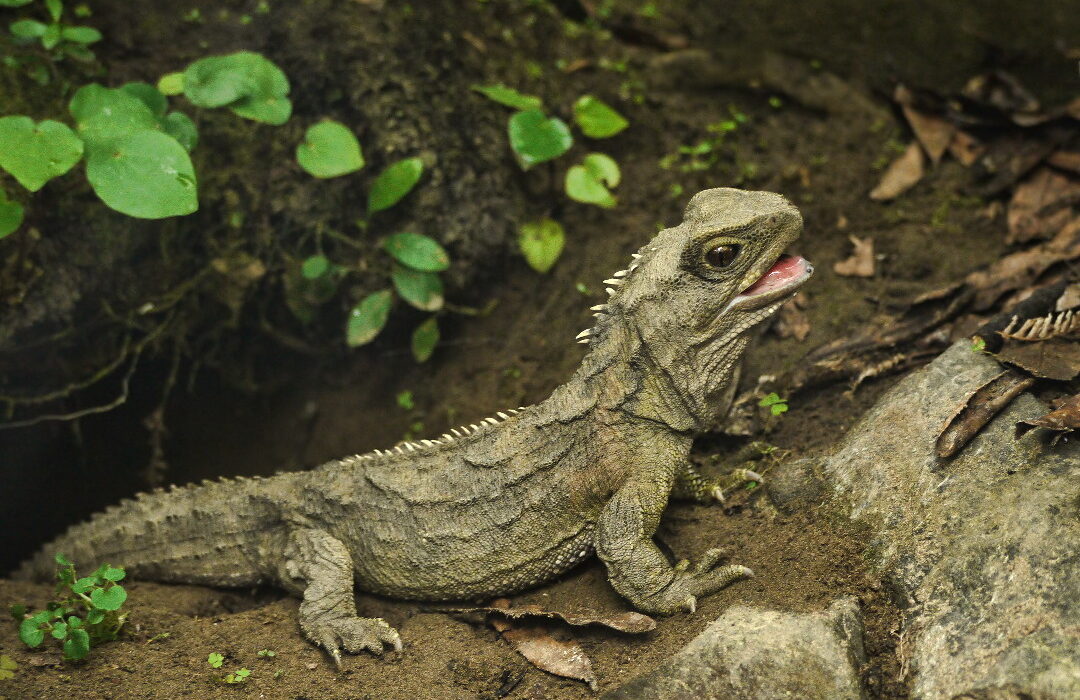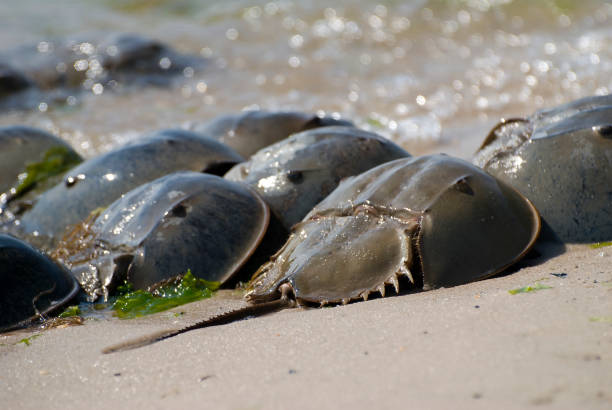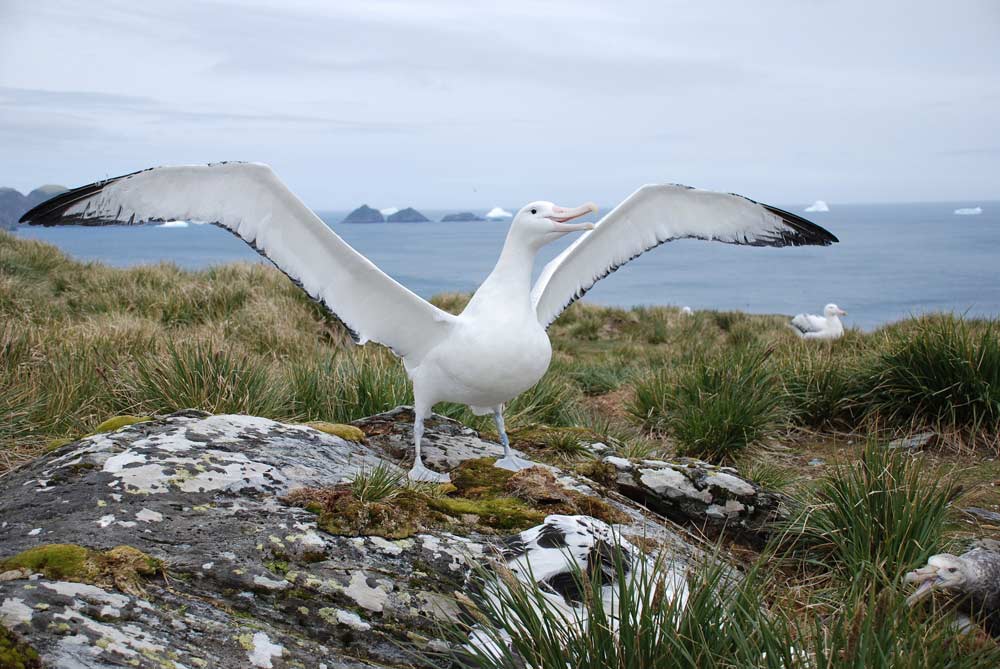Beneath the glittering blue surface of the world’s oceans lies an alien realm—vast, silent, and almost completely unknown. The deep ocean covers more than 60 percent of the Earth’s surface, yet we have explored less than 5 percent of it. It is a world of perpetual darkness, crushing pressure, and bone-chilling cold. Sunlight never penetrates these depths, but life endures there—strange, beautiful, and terrifying.
The creatures that inhabit the abyss are unlike anything we see on land or even in shallower waters. They have evolved in isolation, adapting to the extreme conditions of their shadowy world. Some glow with an eerie bioluminescence, others possess transparent bodies or enormous eyes to catch the faintest glimmer of light. Many are so bizarre that they seem to belong to another planet.
The deep ocean is not just a frontier of exploration—it is a mirror to the unknown. Every discovery from the depths challenges our imagination and reminds us of how little we truly understand about our own planet. Here are ten of the most mysterious and fascinating creatures that call the deep ocean home.
1. The Giant Squid – The Elusive Leviathan
For centuries, sailors told tales of monstrous sea creatures with tentacles long enough to pull entire ships into the depths. These legends, once dismissed as superstition, turned out to be rooted in reality. The giant squid, Architeuthis dux, is one of the most enigmatic and awe-inspiring animals on Earth.
Growing up to 43 feet in length, the giant squid is a true leviathan. It has eyes the size of dinner plates—the largest in the animal kingdom—allowing it to detect faint glows in the blackness thousands of feet below the surface. Its eight arms and two longer feeding tentacles are lined with suction cups armed with serrated rings, designed to grasp and hold prey in the dark.
For centuries, no one had ever seen a living giant squid. The only evidence came from carcasses washed ashore or pieces found in the stomachs of sperm whales. It wasn’t until 2004 that Japanese researchers captured the first images of one alive in its natural habitat. In 2012, scientists finally recorded video footage of this legendary creature in the wild.
The giant squid remains shrouded in mystery. We know it dwells at depths between 1,000 and 3,000 feet, where it hunts deep-sea fish and other squids. But much about its behavior, reproduction, and lifespan is still unknown. It is a ghost of the deep—rarely seen, seldom understood, and endlessly captivating.
2. The Goblin Shark – The Living Fossil
If nightmares could swim, they might look like the goblin shark. With its long, flattened snout and jaws that thrust forward like a spring-loaded trap, this creature seems born from the imagination of a horror writer. Yet it is very real—and very ancient.
The goblin shark, Mitsukurina owstoni, is sometimes called a “living fossil” because its lineage dates back over 125 million years. It dwells in deep waters, usually between 3,000 and 4,000 feet below the surface, and rarely comes near shore. Its pale pink skin, translucent flesh, and eerie, protruding jaws make it one of the strangest-looking fish ever discovered.
What sets the goblin shark apart is its extraordinary feeding mechanism. When it senses prey, its jaw shoots forward at lightning speed, powered by elastic ligaments. The effect is startling—it looks like something straight out of science fiction. Once the prey is caught, the jaw retracts back into place.
Because encounters with goblin sharks are so rare, scientists know little about their habits. They are believed to be slow-moving ambush predators, feeding on squid, fish, and crustaceans. Their ghostly appearance and ancient lineage make them one of the most mysterious creatures of the deep sea—a living reminder of Earth’s prehistoric past.
3. The Vampire Squid – The Dark Beauty
Despite its sinister name, the vampire squid (Vampyroteuthis infernalis) is a delicate, almost ethereal creature. Its Latin name means “vampire squid from hell,” yet this small animal is far from demonic—it’s a marvel of adaptation and grace.
Living at depths of up to 3,000 feet, where oxygen levels are extremely low, the vampire squid has evolved to survive where few others can. Its gelatinous body, about the size of a football, glows with a subtle bioluminescence. Its skin shimmers in shades of red and black, and its large blue eyes—the largest relative to body size of any animal—capture every trace of available light.
Unlike most squid, it does not hunt. Instead, it feeds on “marine snow,” the steady rain of organic debris that drifts down from the upper ocean layers. It uses thin, sticky filaments to collect this nutrient-rich material from the water.
When threatened, the vampire squid turns its webbed arms inside out, exposing rows of spiny projections. It can also emit clouds of glowing blue mucus to distract predators before making a slow, ghostly escape into the darkness.
This remarkable creature is a symbol of the deep sea’s quiet resilience—a gentle survivor thriving in a world of perpetual night.
4. The Anglerfish – The Monster with a Light
Few images capture the eerie beauty of the deep ocean like the anglerfish. With its gaping mouth, needle-like teeth, and glowing lure, it is one of nature’s most terrifying yet ingenious predators.
The anglerfish’s most striking feature is its bioluminescent “fishing rod”—a modified dorsal spine tipped with a glowing bulb. This light is produced by symbiotic bacteria living inside the lure. In the black abyss, where light is scarce, this glowing beacon is irresistible to smaller creatures. When they approach, the anglerfish snaps its jaws shut with astonishing speed.
There are over 200 species of anglerfish, many of which live thousands of feet below the surface. Perhaps the most bizarre aspect of their biology is their method of reproduction. In some species, the tiny male fuses permanently to the much larger female, becoming a living appendage that provides sperm when needed.
The anglerfish embodies the surreal adaptations of the deep sea—a world where life thrives by bending the rules of evolution. It is both horrifying and hypnotic, a perfect predator sculpted by darkness itself.
5. The Giant Isopod – The Deep-Sea Armadillo
If you could shrink yourself down and wander the ocean floor, you might encounter what looks like an enormous pill bug crawling across the mud. That would be the giant isopod, Bathynomus giganteus, one of the deep sea’s most peculiar residents.
A relative of the tiny woodlouse, the giant isopod can grow up to 20 inches long. It lives in the cold, dark waters of the Atlantic, Pacific, and Indian Oceans, often at depths greater than 7,000 feet. Its armored shell and jointed legs give it the appearance of a prehistoric creature.
Giant isopods are scavengers, feeding on the carcasses of whales, fish, and squid that fall to the seafloor. They can survive months without food and then gorge themselves when a meal finally arrives. Their slow metabolism and efficient energy use are key to surviving in an environment where food is scarce.
Though they may look intimidating, giant isopods are harmless, shy creatures. Their alien appearance is a reminder that evolution takes astonishing forms in the deep ocean, sculpting life to endure against impossible odds.
6. The Barreleye Fish – The Transparent-Headed Wonder
At first glance, the barreleye fish (Macropinna microstoma) seems unreal—like something out of a science fiction film. Its most striking feature is its transparent, fluid-filled head, through which its tubular eyes can be seen rotating like periscopes.
This deep-sea fish lives at depths of 2,000 to 2,600 feet and is perfectly adapted to its dim environment. Its large, barrel-shaped eyes are extremely sensitive to light, allowing it to detect faint bioluminescent glows from prey above. The transparent dome acts like a shield, protecting the eyes from stinging jellyfish as it steals food from their tentacles.
For decades, scientists misunderstood the barreleye’s anatomy, believing its eyes faced forward. Only with modern submersible cameras did researchers discover that the eyes actually point upward—and can rotate forward when the fish feeds.
The barreleye’s translucent head gives it a surreal, almost ghostly appearance. It is one of the most visually stunning examples of deep-sea adaptation—a living window into the strange physics of light and survival in darkness.
7. The Frilled Shark – The Serpent of the Abyss
The frilled shark (Chlamydoselachus anguineus) is another living fossil from the ocean’s depths, a creature whose ancestry dates back 80 million years. With its eel-like body, six pairs of frilled gills, and rows of needle-shaped teeth, it looks like a mythical sea serpent brought to life.
Found in deep waters between 2,000 and 4,000 feet, the frilled shark is rarely seen by humans. It moves with slow, serpentine grace, propelling itself through the water like a ribbon. Its 300 trident-shaped teeth, arranged in 25 rows, are perfect for trapping slippery prey such as squid.
The frilled shark gives birth to live young after a gestation period that may last up to three and a half years—one of the longest known in any animal. Its primitive anatomy and reclusive nature make it a living relic of ancient seas, a creature that has changed little since the age of dinosaurs.
Every glimpse of a frilled shark feels like a portal to Earth’s distant past, a reminder that the ocean still holds secrets older than civilization itself.
8. The Deep-Sea Dragonfish – The Predator of Darkness
In the eternal night of the deep sea, light is both a weapon and a lure. The deep-sea dragonfish (Grammatostomias flagellibarba) is a master of this art. With its long, slender body, enormous teeth, and glowing barbel dangling from its chin, it is a predator perfectly adapted to its dark domain.
This fearsome fish lives thousands of feet below the surface, where sunlight never reaches. Its bioluminescent lure attracts prey, and its body glows with subtle light patterns that help it communicate and camouflage itself.
One of the dragonfish’s most remarkable features is its ability to produce red light—a color invisible to most deep-sea creatures. This allows it to hunt undetected, seeing prey that cannot see it in return. Its large, hinged jaws can swallow prey nearly as big as itself.
The dragonfish may look monstrous, but it is a marvel of evolution. It represents nature’s ingenuity at its most extreme—a hunter that thrives in one of the harshest environments on Earth.
9. The Dumbo Octopus – The Adorable Abyssal Wanderer
Among the eerie predators and ghostly scavengers of the deep, the Dumbo octopus (Grimpoteuthis) stands out for its charm. Named for its ear-like fins that resemble Disney’s Dumbo the elephant, this small octopus inhabits depths of up to 13,000 feet, making it one of the deepest-living octopuses known.
Its soft, gelatinous body allows it to withstand immense pressure. Unlike other octopuses, it doesn’t squirt ink or hide in crevices—it simply floats gracefully through the water, flapping its “ears” and drifting with quiet elegance.
Dumbo octopuses feed on small crustaceans and worms, which they swallow whole. They are gentle, solitary creatures that seem almost serene in their movements, gliding silently through a world without sunlight.
Their appearance has captivated both scientists and the public, reminding us that not all deep-sea life is fearsome—some of it is quietly, irresistibly beautiful.
10. The Yeti Crab – The Hairy Mystery of the Deep
Discovered in 2005 near hydrothermal vents in the South Pacific, the Yeti crab (Kiwa hirsuta) is one of the most unusual creatures ever found. It is a pale, ghostly-white crustacean covered in silky hair-like filaments that give it a strangely mammalian look.
The Yeti crab lives in one of the most extreme environments on Earth—around hydrothermal vents where superheated water rich in toxic minerals gushes from the seafloor. Instead of feeding on other animals, it cultivates bacteria on its hairy claws, using them as a food source.
Its discovery stunned scientists because it represented an entirely new family of crustaceans. The Yeti crab’s strange appearance and bizarre lifestyle highlight how little we know about the ecosystems hidden in the ocean’s darkest corners.
It is a creature that embodies mystery and adaptation, thriving in a place where few others can survive.
The Endless Mystery of the Deep
Every time a submersible descends into the abyss, new creatures appear—many never before seen by human eyes. Some flash like living stars; others move with alien grace. Scientists estimate that millions of deep-sea species are still undiscovered, each with unique adaptations that could rewrite what we know about biology, chemistry, and even evolution.
The deep ocean is the last true frontier on Earth—a place of secrets, beauty, and terror. It humbles us, reminding us that our world is larger and more mysterious than we can imagine. Every glowing fish, every drifting jelly, every unseen predator beneath the waves tells the same story: that life, in all its forms, finds a way to exist, even in the darkest places.
To explore the deep ocean is to look into the unknown—and to see the wonder of life reflected in the black mirror of the abyss.
